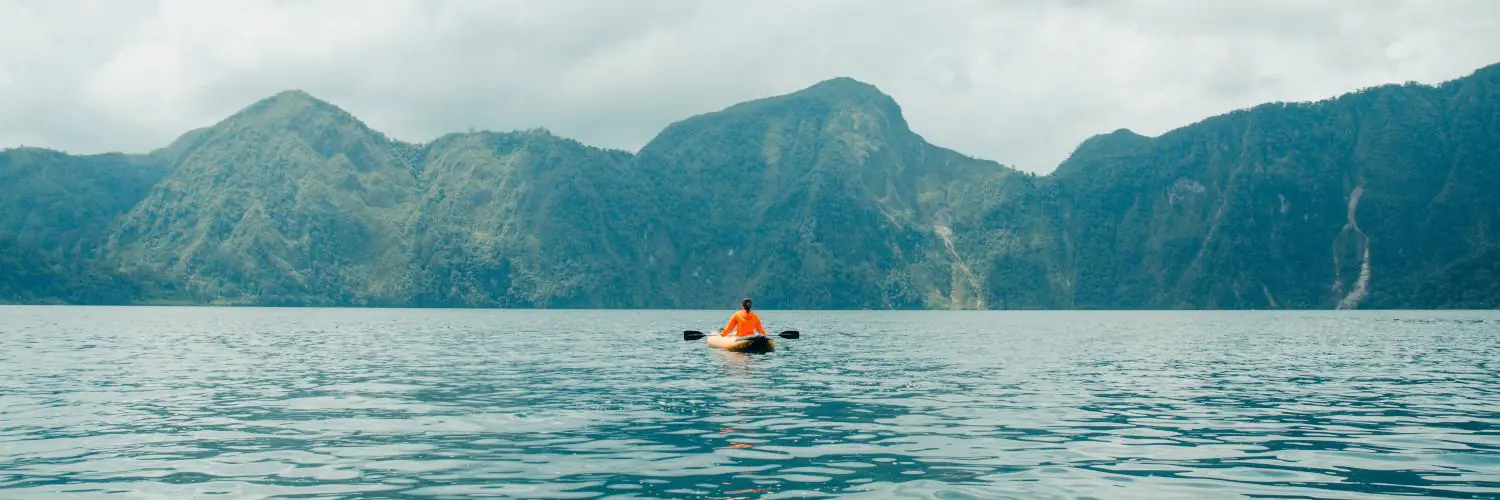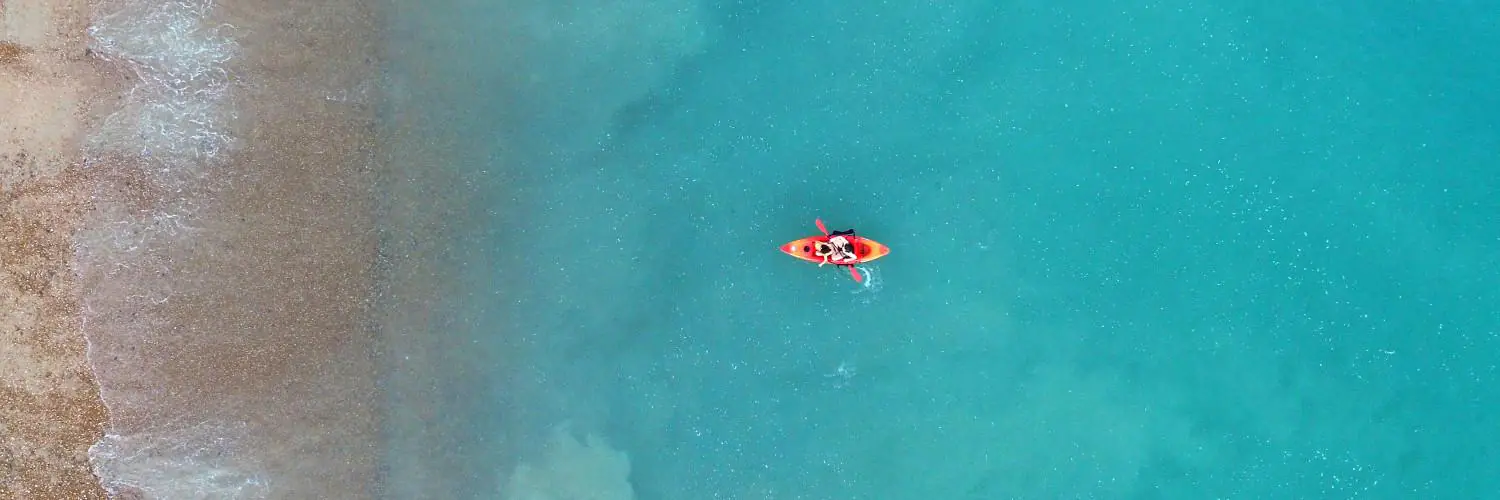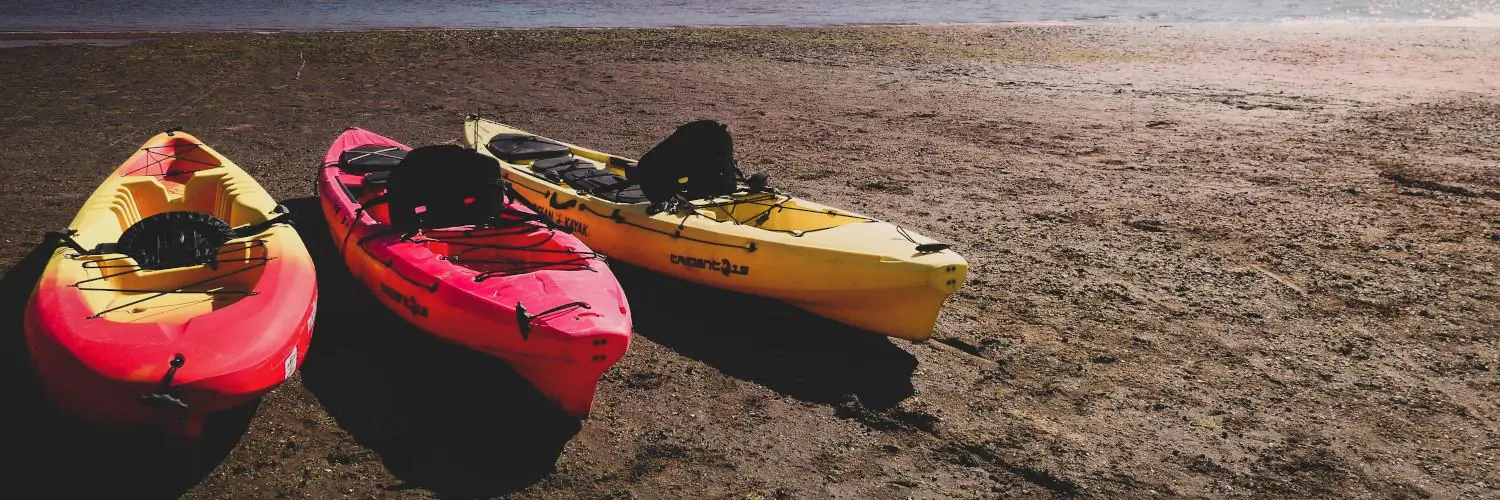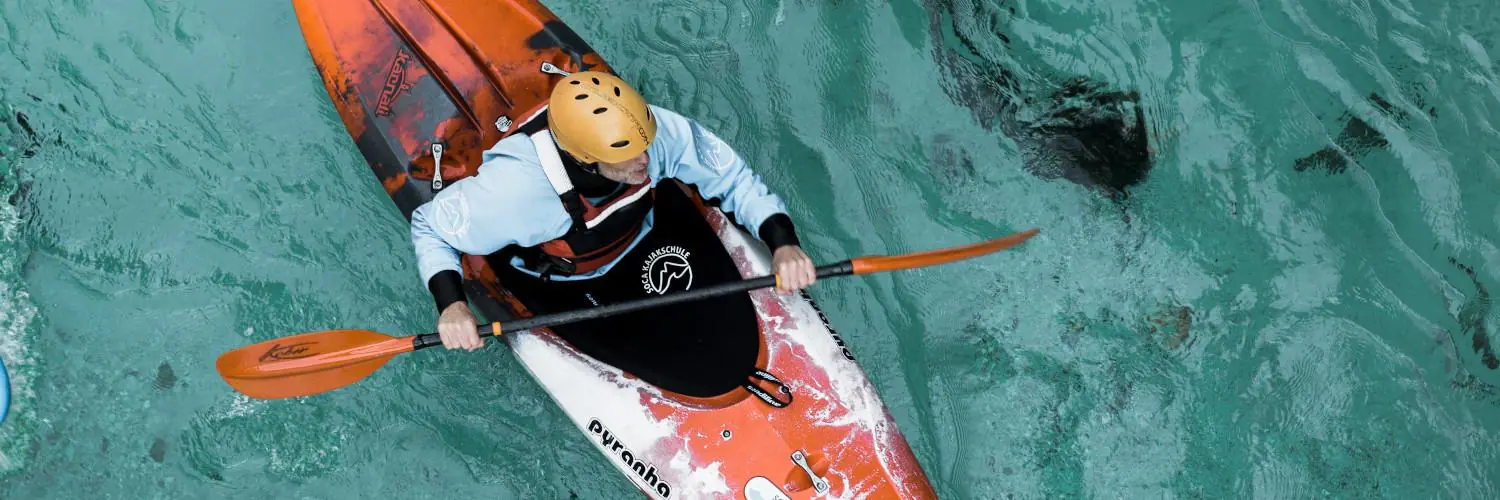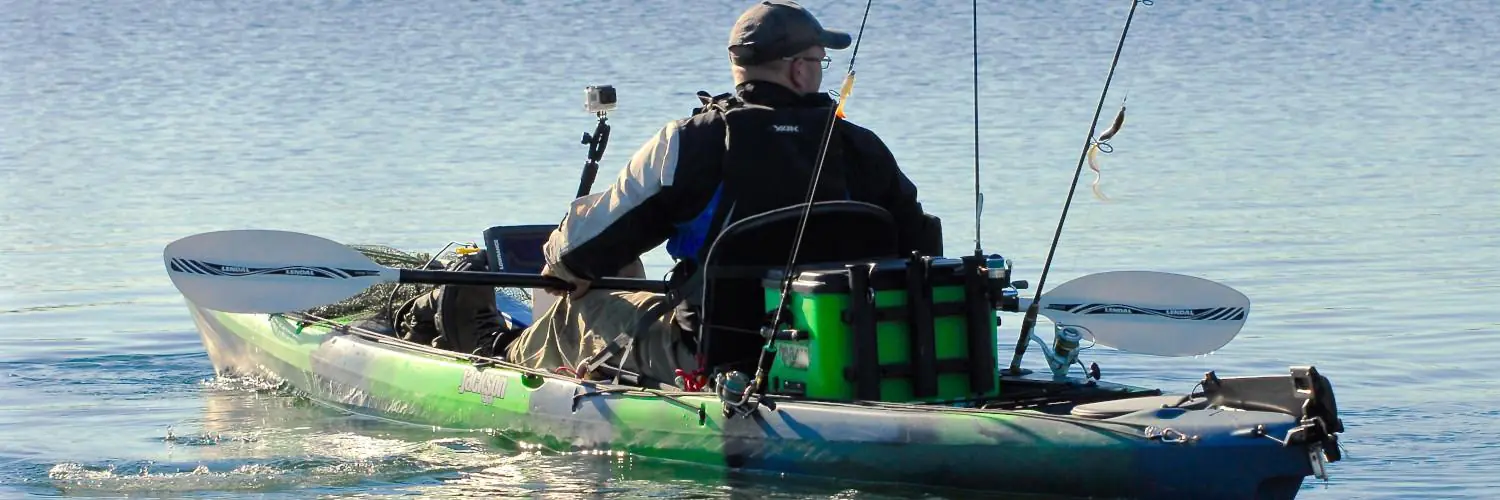Ile d’Ambre, a small island off the northeast coast of Mauritius, is a haven for those seeking to immerse themselves in nature and experience the tranquility of kayaking through mangroves. This lush haven, rich in biodiversity and steeped in history, provides a serene escape from the bustling mainland and offers kayakers a unique perspective on the island’s diverse ecosystem.
Kayaking in the region has gained popularity as both a leisurely activity and an eco-friendly way to explore the delicate mangrove forests, which play a crucial role in protecting the coastline and supporting marine life. Paddlers can glide through the clear waters of the lagoon, navigating around traditional pirogues and exploring hidden coves, all while learning about the local flora and fauna from skilled guides.
Mauritius, known for its stunning landscapes and inviting waters, sets the stage for this adventure at Ile d’Ambre. With no prior kayaking experience required and professional instruction adhering to international standards, visitors to the island can safely embark on a journey through the mangroves, enriching their understanding of the island’s natural beauty and historical significance.
Table of Contents
History and Significance of Ile D’Ambre
Ile d’Ambre, nestled close to the northeast coast of Mauritius, is a location deeply rooted in both ecological significance and rich historical narratives. This islet’s past weaves a story of ecological importance and times marked by human influence.
Colonial Past of the Island
Mauritius’ history is marked by a period of colonial conquest and trade, which left an indelible imprint on Ile d’Ambre. Originally, the island was frequently visited by sailors and explorers as a stopover during long voyages across the Indian Ocean. The presence of ambergris – a valuable substance used in perfumery, once found washed ashore, is a testament to the island’s historical allure.
During colonial times, Ile d’Ambre became ensnared in the wider historical developments of Mauritius. European powers, drawn by the strategic location of Mauritius on the maritime route to India, took interest in the island, and Ile d’Ambre was no exception. It lay witness to the power struggles between the Dutch, French, and British who successively took control of Mauritius.
Cultural and Historic Ruins
The ruins scattered across Ile d’Ambre speak volumes of its cultural and historical legacies. While the island does not boast grandiose structures, the remnants found here include foundations and artifacts from bygone eras.
- Limestone kilns: These structures hark back to an era when lime was a valuable commodity for construction and agriculture.
- Old settlements: The vestiges of homes and public structures reflect the lives that once thrived on the island, albeit transiently.
These ruins are silent custodians of history, encapsulating the tales of the island’s past residents and visitors. They are a focal point for visitors today, providing an interactive glimpse into the island’s layered history. Through the conservation efforts within the national park designation, Ile d’Ambre’s ruins remain a poignant reminder of the island’s significance beyond its ecological treasures.
Kayaking Expedition Details
In the beautiful waters surrounding Ile d’Ambre, kayaking enthusiasts can find a range of tour packages that cater to various skill levels, complete with detailed safety briefings, required gear, and guidelines for the best times to embark on these adventures. Operators ensure a rich experience with conditioned access to the eastern lagoon’s vibrant ecosystem.
Tour Packages and Reservations
- Half-Day Trips: Typically designed for beginners and include all necessary equipment.
- Full-Day Expeditions: More suited for experienced kayakers, these may cover greater distances and include additional exploration spots.
- Reservation Process: Interested parties should contact providers in advance, with a minimum of two participants often required.
- Contact Number: +230 269 1000
Safety Instructions and Gear
- Briefing: Each tour starts with a safety briefing adhering to British Canoeing standards.
- Mandatory Gear Provided: Includes life jackets, paddles, and kayaks equipped with hatches and backrests. Personal floating devices are also provided to ensure maximum safety.
Best Times and Operating Days
- Tours often operate throughout the week, varying by season and weather conditions.
- The best times for kayaking are typically in the morning hours when the water is calmest.
- Recommended: Contact tour operators to confirm operating days and best times.
Route and Exploring the Eastern Lagoon
- Start Point: Expeditions commonly begin at designated points along the shore with a short slalom through moored pirogues.
- Natural Highlights: Includes paddling through mangrove forests and navigating the clear waters of the eastern lagoon, allowing for up-close encounters with marine life.
Flora and Fauna around Ile d’Ambre
Ile d’Ambre is renowned for its diverse ecosystems, where flourishing mangroves serve as nurseries for marine life and the island’s lush greenery provides a habitat for distinct wildlife.
Mangrove Ecosystem
The mangroves of Ile d’Ambre are a vital part of the marine ecosystem. They provide a safe haven for juvenile fish and host a range of intertidal organisms. Root systems of these salt-tolerant plants stabilize the coastline and reduce erosion.
Native Marine Life
Within the protective roots of the mangroves, a variety of marine species thrive. The ecological balance supports numerous fish, crustaceans, and mollusks. These species play a significant role in maintaining the health of the surrounding coral reefs.
Island Greenery and Wildlife
Beyond the mangrove forests, Ile d’Ambre is adorned with an array of flora including native tree species and understory plants. The island’s fauna includes bird species that are native to Mauritius, as well as a range of insects and lizards that contribute to the island’s biodiversity.
Conservation Efforts
Efforts to preserve Ile d’Ambre’s delicate ecosystem are of paramount importance. Notable endeavors focus on safeguarding the natural habitat, ensuring activities are conducted responsibly with minimal impact on the environment.
Protecting the Natural Habitat
The conservation of the biodiversity-rich mangroves around Ile d’Ambre is imperative. With diverse fauna and flora, including several endemic species, it is critical that the natural environment is maintained with minimal human interference. These mangroves serve as vital breeding grounds for marine life and also act as natural barriers against coastal erosion, highlighting the need for ongoing protective measures to sustain the ecosystem.
Eco-Friendly Tourism Practiced by Yemaya Adventures
Yemaya Adventures has committed to eco-friendly tourism within the region to ensure the continued vitality of the island’s environment. Key practices include:
- Providing educational tours that inform participants about the ecological significance of mangroves.
- Ensuring kayak trips are led by guides with personal skills certifications from British Canoeing, emphasizing safe and responsible kayaking.
- Adhering to practices that respect the local wildlife, offering half-day trips that avoid overexposure of sensitive areas.
Through these conscientious steps, the company helps to minimize the carbon footprint of tourism and instills a conservationist ethos among visitors.
Essential Kayaking Equipment
When embarking on a kayaking adventure around Ile d’Ambre, it’s imperative that one is equipped with the right gear. Proper clothing, footwear, and navigational tools not only ensure comfort but are also crucial for safety.
Recommended Clothing and Footwear
For kayaking, individuals should opt for quick-drying clothing such as a swim suit or synthetic layers. It is important that the clothes worn do not retain water and become heavy. Adequate footwear is also essential, and should typically consist of sea sandals or water shoes that provide grip on wet surfaces and protection from sharp objects in the water. Clothing should allow full range of motion for paddling.
| Clothing | Description |
|---|---|
| Swim Suit | Quick-drying and suitable for water activities |
| Synthetic Top | Light and moisture-wicking for upper body comfort |
| Water Shorts | Durable and quick-drying for lower body movement |
Navigational and Safety Equipment
In terms of safety, a life jacket or personal flotation device (PFD) must be worn at all times. Additionally, kayaks should be outfitted with watertight compartments for securing valuables and emergency equipment. Navigational tools such as a compass or GPS are essential for maintaining one’s bearings. Furthermore, kayaks should have appropriate backrests for support during long paddling sessions, and it is recommended to have tow ropes available in case of emergencies or to help less experienced paddlers.
| Equipment | Function |
|---|---|
| Life Jacket | Essential for personal safety and buoyancy |
| Watertight Compartment | Keeps personal items and equipment dry and secure |
| Compass/GPS | Crucial for navigation and route tracking |
| Backrests | Provides support and increases comfort |
| Tow Ropes | For towing kayaks or in emergency situations |
Equipped with the correct clothing, footwear, and safety gear, kayakers can focus on the stunning scenery and vibrant ecosystem of Ile d’Ambre with confidence and peace of mind.
Additional Activities in Ile d’Ambre
Aside from kayaking, Ile d’Ambre offers splendid opportunities for snorkelling and hiking, allowing visitors to appreciate the island’s diverse marine life and tranquil landscapes.
Snorkelling and Marine Exploration
Snorkelling around Ile d’Ambre reveals a vibrant underwater world teeming with marine life. The clear lagoon waters serve as a sanctuary for a variety of fish species and coral formations. Visitors should bring their own snorkelling gear to explore these accessible reefs, as this area is not typically equipped with rental facilities.
- What to Expect While Snorkelling:
- Diverse fish species
- Coral formations
- Clear, calm waters ideal for marine observation
Hiking on the Island
The island’s terrain is perfect for hiking enthusiasts looking to explore the lush vegetation and witness the local fauna. Trails wind through the dense mangroves, leading to secluded beaches where one can relax and enjoy the pristine settings.
- Hiking Highlights:
- Dense mangrove forests
- Wildlife sightings
- Isolated sandy beaches
- Panoramic views of the coast
Hikers should wear appropriate footwear and be prepared for the tropical climate, ensuring they have adequate water and sun protection during their adventures.
Preparing for the Trip
When setting off for a sea kayaking adventure to Ile d’Ambre, proper preparation is crucial for a safe and enjoyable experience. Packing the right items, protecting oneself from the sun, staying hydrated, and knowing the transportation logistics are the foundational steps every kayaker should follow.
What to Pack
A kayaker should ensure they have all the necessary items for the trip. Here is a list to help with packing:
- Safety gear: Life jacket (provided by the tour operator)
- Navigation tools: Waterproof map and compass (if venturing independently)
- Communication devices: Mobile phone in a waterproof case
- Footwear: Water shoes or sandals with good grip
- Clothing:
- A hat with a wide brim for sun protection
- A spare set of clothes for changing after the trip
- Personal items:
- Sunglasses with UV protection
- Biodegradable sun cream to minimize environmental impact
- A quick-dry towel
- Waterproof bag for personal belongings
- Photography: Camera or waterproof camera for capturing memories
- Food and drinks:
- Snacks such as energy bars or fruit
- Juice and water to stay hydrated
Sun Protection and Hydration
The intensity of the sun in Mauritius requires kayakers to take sun protection seriously. Applying high SPF sun cream before the trip and reapplying it every two hours is necessary.
- Protection gear:
- Sun cream (SPF 30 or higher)
- UPF-rated clothing or long sleeves for additional coverage
- Hydration:
- At least 2 liters of water per person should be packed
- Rehydration salts or electrolyte tablets can be considered for longer trips
Transportation and Meeting Points
Arriving at the designated meeting point on time is important for a seamless start to the kayak journey. Transportation options to the meeting point, typically located at St Antoine, include:
- Public Transportation: Buses or taxis available across the island
- Private Vehicles: Rental cars with parking spaces near the launch site
Meeting Point:
- The exact meeting point and time will be provided by the tour operator. Ensure this is confirmed a day prior to the trip.
In addition, prior to departure, kayakers will receive safety instructions from their guides, emphasizing the importance of adhering to the guidelines for a safe kayaking excursion.

